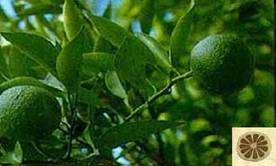SYNEPHRINE
Identification
Ingredient |
Synephrine |
Structure:
 |
Synonyms |
1-(4-hydroxyphenyl)-2-(methylamino)ethanol; 4-hydroxy-alpha-(methylaminomethyl)benzyl alcohol; oxedrine |
Molecular Formula |
C9H13NO2 |
Molecular Weight |
167.21 |
CAS no. |
94-07-5 |
EINECS |
202-300-9 |
Scientific support
Synephrine is an alkaloid (a pharmacologically active class of nitrogen-containing chemical compounds). Its chemical structure is similar to ephedrine, the primary active alkaloid in ephedra, aka ma-huang. There are only two chemical differences between ephedrine and synephrine: in synephrine one of the ring carbons is hydroxylated (a hydroxyl group {OH} replaces a hydrogen atom {H} ), and a side chain methyl group (CH3; Me) is replaced by hydrogen.
Therefore,synephrine is a stimulant, similar to caffeine and ephedrine, it is thought to have similar effects in terms of providing an energy boost, suppressing appetite and increasing metabolic rate and caloric expenditure.
Application
Synephrine is only rarely used as a drug in China, sometimes in high doses to treat shock, similar to the use of high doses of ephedrine for emergency cases of asthma. It is given by intravenous drip or push, with a dose of 20-60 mg. Using chi-shi aqueous extract in injection form, the dose used in Chinese medical practice corresponded to 20-60 grams of the herb, which could contain 60-180 mg of synephrine (3). These doses of the citrus alkaloids are similar, on a milligram basis, to those of ephedrine. Similarities in chemical structure, dosage, and effects between synephrine and ephedrine suggest that they may be compared directly. Synephrine was also suggested in Chinese and Western medical literature to be a potential treatment for bronchial asthma, as is ephedrine.
In USA, Citrus aurantium Extract with different levels of syenphrine is largely used in various products of weight loss and dietary supplements, and it can be used in beverage in EU countries although there are some disputes about its side effect.
Distribution
Synephrine is found mainly in the medicinal products derived from bitter orange. Bitter orange also called Seville orange, is known botanically as Citrus Aurantium L. This ingredient appears to be present in slightly higher quantities in the unripe fruit than in the ripe fruit.
Some citrus materials that have been assayed in China have a higher synephrine content; in one study, synephrine levels in citrus fruits and peels ranged from as little 0.1% to a very high 2.0% (9), while most reports place the level at about 0.25%.
Availability
Commercial synephrine (Citrus Aurantium Extract) is obtained by extraction from immature fruits of Citrus Aurantium L.

Immature fruits of Citrus Aurantium L.
Warning:
Above information is only knowledge,not an instruction of usage for this product. The owner of this webiste should not be responsible for any damage because of misuse of the product. |



